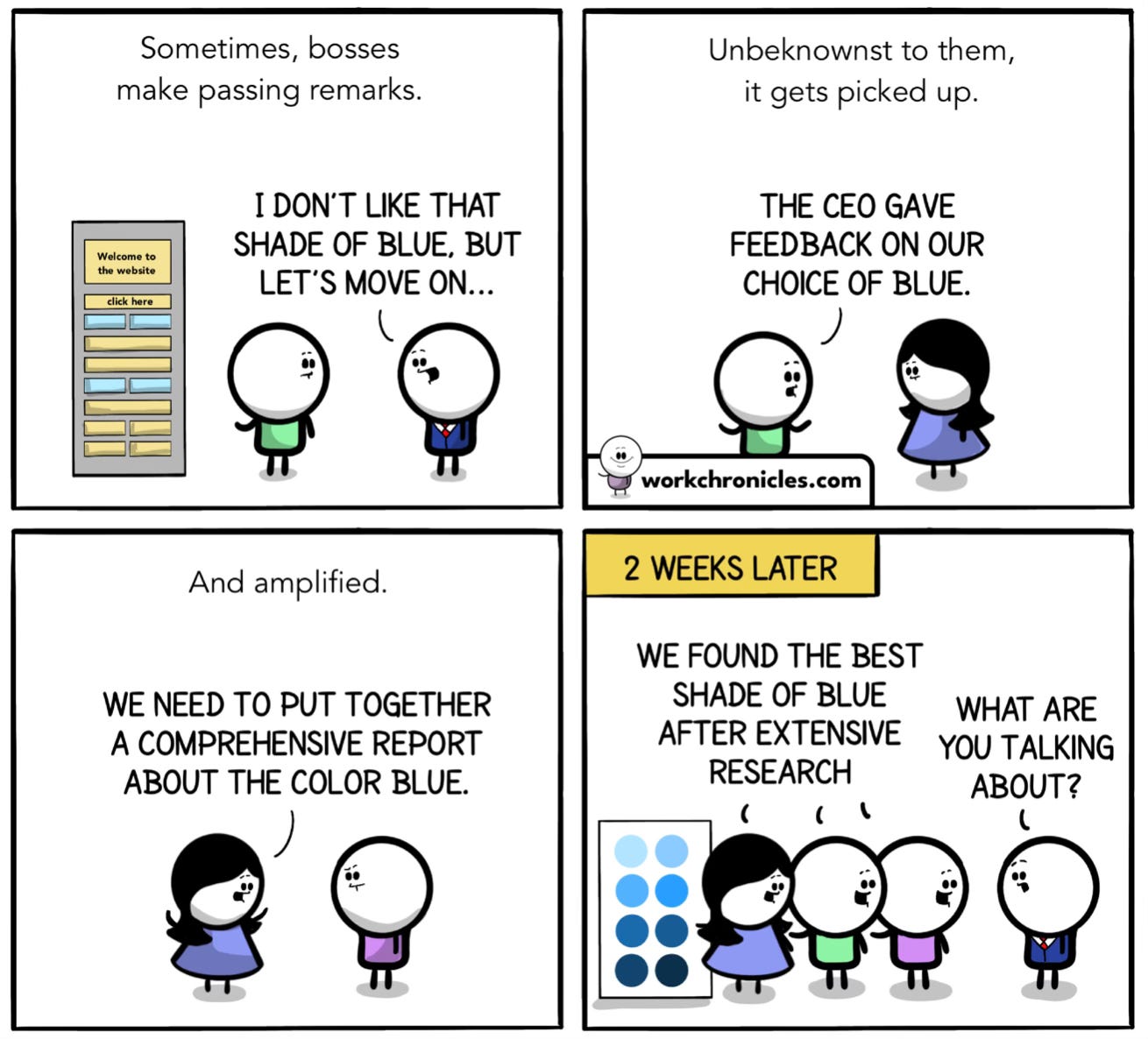Accidental influence
Leading with intent, not by accident
Have you ever thought aloud in a meeting, only to be confronted a month later by ‘We did what you asked for!’ By this time ‘what you asked for’ is a distant memory at best.
Or maybe, like me, you’ve made a throwaway comment, or a joke, only for someone else in the room to go ‘That’s a great idea!’, and before you know it, somebody is busy designing a blog written by an eight-legged shark.
If this kind of thing has happened to you, you’re the victim of accidental influence.
Don’t be an accidental leader
Accidental influence occurs when the most senior person in the room makes a comment about the topic, which to them is a mild observation, but the power distance in the dynamics of the group or the culture of the organisation turns it into an order.

It’s a particular risk for newly-promoted leaders, as they find themselves continuing to act like a member of the team, unconscious that the psychology of the team has changed. The new leader’s words carry more weight than they may realise.
This also happens a lot with leaders who are trying to cultivate open relationships with their teams. You might think you’re spitballing ideas. They hear instructions and inspiration.
I find it’s a good idea to make it very clear to the team when you’re just thinking aloud, or offering an opinion. Even then, be aware that if you’re the most senior person in the room, your opinion carries more weight than most. You can make it clear that you’re operating from a position of curiosity or ignorance, but until you’ve built trust with your team, be aware of the risk.
This is one of the reasons, to paraphrase Simon Sinek, leaders should speak last. Letting other folks offer their views before you influence them allows them to talk more freely and share original ideas. Be aware though, that without trust, people are likely to tell you what they think you want to hear than they are to give you their honest opinion.
As with so many things, prevention is better than cure, so how can you approach team interactions in a way that enables you to move from accidental obstruction to intentional leadership?
Avoid being accident-prone
Here are some steps you can take to avoid accidental influence.
Build trust
There’s ample evidence that the highest-performing teams are the ones with the highest levels of psychological safety. This doesn’t happen by accident. Creating a space where all voices feel heard and respected will give you the best chance of ensuring that they also feel safe to challenge and ignore you.
Stay humble
The leaders who worry about accidental leadership the most are often those who should worry least. If you’re certain that you’re right, and you’re directing your teams to do as you say, you’re robbing them of the opportunity to learn. You’re robbing the organisation of the benefit of diversity of thought, and you’re robbing yourself of the opportunity to deliver the optimal solution of the organisation.
Let it go (but know when to step back in)
There will be times where the team will run in the opposite direction of what you think is the next best action. This may be no bad thing. You don’t have a monopoly on good ideas. Letting the team run with its own ideas, inspecting the reasons for success, and celebrating failure, can foster robust dialogue, and lower the power distance in teams. Having said that, if the debate overrides core values, or starts to threaten to derail the team’s ability to deliver, you may need to intervene with context.
Embrace uncertainty
Many organisations lean into the leader-as-hero, the person with all the answers. Every one of your utterances can be heard as commandments. Resist this by making it clear what level of uncertainty you have. If you’re new to an area, embrace your ignorance. Even when you have a good idea of where the team should lean, let others speak, respect their ideas, and acknowledge you could be wrong. You’ll be amazed at how a team can embrace a safe space.
Lead from behind
Speak last. Let the debate inform your opinions, and then inform the team as to what your opinions are. Don’t prevent potential innovations by enforcing your frame of reference on the team up-front.
In conclusion
The key to leadership is intention. Don’t be an accidental leader. Demonstrate that you can lead by listening. Give your team the direction they need, not distractions to consume them.
Adam Grant (as always) puts it best:


